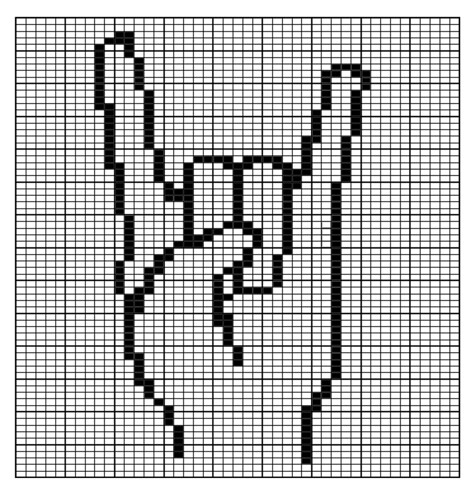If you’re a chart person, you should totally use this fabulous chart!
Errata: If you printed this out the first day it was up (8/23/07) , there was an typo in line 14 of the lace pattern (it said P2 instead of P1), with the same error in the setup row (fixed 9/18). The setup row is the same as of 14, but when I fixed the typo in the pattern, I neglected to fix it in the setup row. I’ve also added clarification to the beginning/ending rows for the scarf variation. (Thanks for your help, everyone. It’s my first all-over lace pattern, so I’m not terribly adept at spotting typos. Maybe I should switch to charts–suddenly I understand their appeal.)
Finally, I cleaned up/clarified the ending section on 10/19.
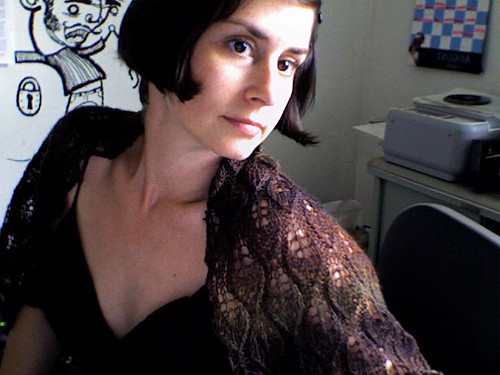
This self-striping sock yarn has a dark brown base with layers of green, yellow, and orange, for a rich, woodsy pallette perfect for a nice leaf patten from a vintage knitting pamphlet. Since I only had one ball, and since I got it at last year’s TNNA and had little hope of finding another from the same dye lot, I was delighted to be able to squeeze a whole shawl out of a single skein. While it’s not skimpy, it is on the dainty side, but if you have an extra skein, you could get a much more generous wrap. If you want it wider, cast on an extra 12 st for each extra double column of leaves (each set adds 2.5-3″/7cm in width). If you want a long scarf instead, start by CO 41 st and work the beginning/ending rows in 1×1 rib, starting with K (instead of K2 at beg & end, you’ll have K1)
Yarn: 1 skein Lana Grossa Mega Boots Stretch Soft Color, color 502 (460yd, 100 grams, 70% Pure New Wool,23% Nylon, 7% Elite Elastic Fiber)
Needles: US 6
Finished, Blocked Size: 21″/53cm x 40″/102cm
Notes: Due to differences in individual tension, it’s difficult to specify exactly how many repeats you’ll need. I use this trick to gauge how much yarn I’m using:
About 8 rows in (or at any wider section–this pattern undulates, so to be safe, measure at the wider portion), I hold my needles in my left hand and pull out enough yarn from the skein to reach my right hand with my arms outspread. Then I tie a slip knot at the end of that length. I repeat it a few more times. Then I knit a row as usual, making a note of how many slipknots I pass, and how far between the next set my knitting takes me. I usually repeat it a few times over the course of the project to make sure it’s accurate.
When I’m nearing the end of the skein, I unwind the remaining yarn and measure it with armslengths to figure out how many rows I have left in the skein, and always allowing at least one extra row’s worth as wiggle room.
ABBREVIATIONS
BO: bind off
CO: cast on
K: knit
K2tog: knit two stitches together as one
P: purl
SKP: Slip 1 knitwise, Knit 1, Pass the slipped stitch over the knit stitch
SK2P: Slip 1 knitwise, K2tog, Pass the slipped stitch over the K2tog
YO: yarn over
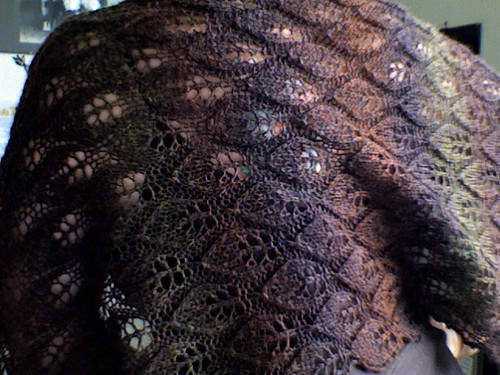
PATTERN
It helps me to have a sense of the pattern to get a handle on it. Here’s how this one goes. Each leaf is flares out along a central knit stitch with 3 stacked pairs of YOs flanked with a growing number or knit stitches, then tapers back to a point with a series of SKP/K2togs flanking a decreasing number of knit stitches. The point is formed with a SK2P. You’ll be working the bottom/fat/YO half of one leaf as you work the top/tapered/dec half of the adjacent, staggered leaf, so as one leaf flares to the maximum, the adjacent leaf with be tapering to its point. A gutter of 2 purls separates the staggered columns of leaves.
All the action happens on the right side. The wrong side is worked in pattern, with YOs always being purled.
I’ve noted the net change (e.g, 4 YO – 2 dec st = net +2) for each row that causes a stitch count change in the subsequent row.
Row 1 (RS): P2, YO, K1, YO, P2, *SKP, K3, K2tog, P2, YO, K1, YO, P2, repeat from * to end. (net change: +2)
Rows 2 and 12: K2, P3, K2, *P5, K2, P3, K2, repeat from * to end.
Row 3: P2, K1, YO, K1, YO, K1, P2, *SKP, K1, K2tog, P2, K1, YO, K1, YO, K1, P2, repeat from * to end. (net change: +2)
Rows 4 and 10: K2, P5, K2, *P3, K2, P5, K2, repeat from * to end.
Row 5: P2, K2, YO, K1, YO, K2, P2, *SK2P, P2, K2, YO, K1, YO, K2, P2, repeat from * to end. (net change: +2)
Row 6: K2, P7, K2, *P1, K2, P7, K2, repeat from * to end.
Row 7: P2, *K7, P5, repeat from *, end with K7, P2.
Row 8: K2, *P7, K5, repeat from *, end with P7, K2.
Row 9: P2, SKP, K3, K2tog, P2, *YO, K1, YO, P2, SKP, K3, K2tog, P2, repeat from * to end. (net change: -2)
Row 11: P2, SKP, K1, K2tog, P2, *K1, YO, K1, YO, K1, P2, SKP, K1, K2tog, P2, repeat from * to end. (net change: -2)
Row 13: P2, SK2P, P2, *K2, YO, K1, YO, K2, P2, SK2P, P2, repeat from * to end. (net change: -2)
Row 14: K2, P1, K2, *P7, K2, P1, K2, repeat from * to end.
Row 15: P5, *K7, P5, repeat from * to end.
Row 16: K5, *P7, K5, repeat from * to end.
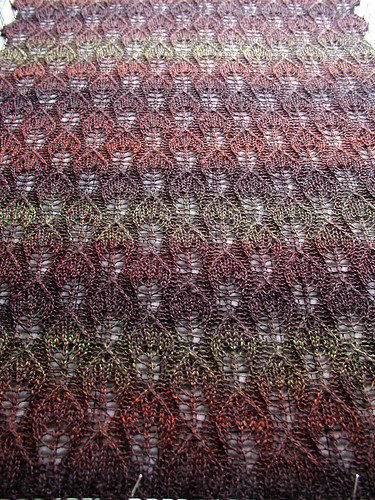 INSTRUCTIONS
INSTRUCTIONS
CO 89.
Edge:
K2, *P1, K1, repeat from * to 2 st from end, K2. Work following row in pattern.
Pattern set-up row (WS): K2, P1, K2, *P7, K2, P1, K2, repeat from * to end.
Begin pattern, repeating until you have 12 extra rows’ worth of yarn worth remaining. (I had enough to work 12 repeats before my ending section.)
Ending section:
Row 1 (RS): P2, M1, K1, M1, P2, *SKP, K3, K2tog, P2, M1, K1, M1, P2, repeat from * to end.
Row 2: K2, P3, K2, *P5, K2, P3, K2, repeat from * to end.
Row 3: P2, K1, M1, K1, M1, K1, P2, *SKP, K1, K2tog, P2, K1, M1, K1, M1, K1, P2, repeat from * to end.
Rows 4: K2, P5, K2, *P3, K2, P5, K2, repeat from * to end.
Row 5: P2, K2, M1, K1, M1, K2, P2, *SK2P, P2, K2, M1, K1, M1, K2, P2, repeat from * to end.
Row 6: K2, P7, K2, *P1, K2, P7, K2, repeat from * to end.
Row 7: P2, *K7, P5, repeat from *, end with K7, P2.
Row 8: K2, *P1, K1, repeat from * to 2 st from end, K2.
Work following row in pattern (knitting the knits and purling the purls), then BO.
Wet block to approx 21 x 40″.
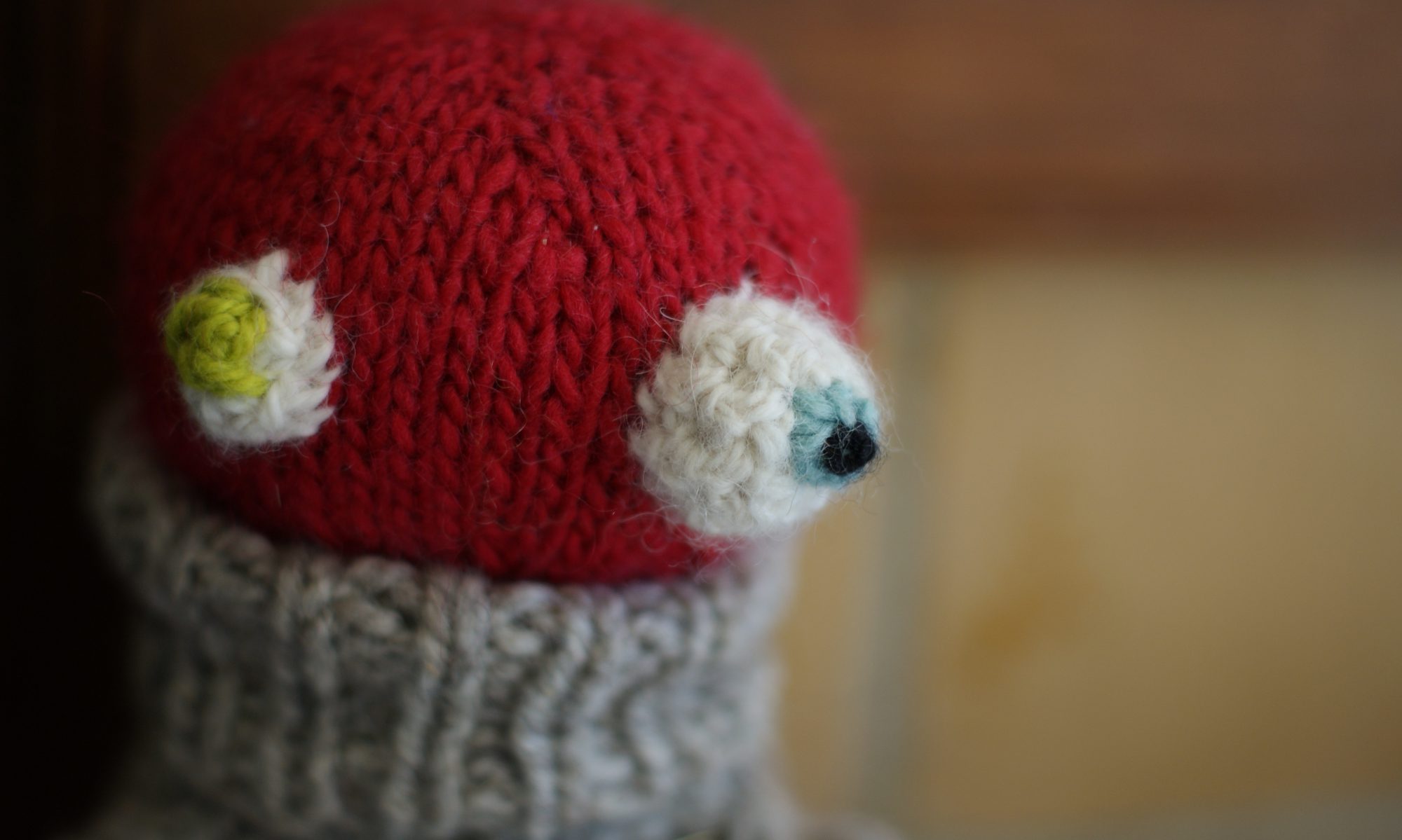
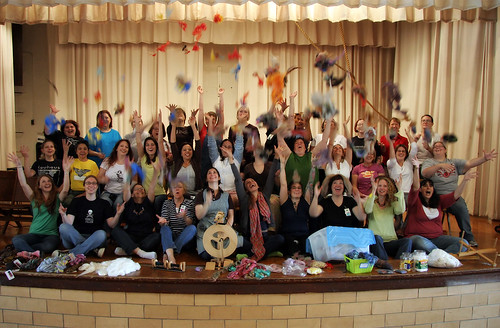

 CHARITY KNITTERS: You may use this pattern freely for charity fundraising as long as you attach a tag/card with the name of the pattern and credit Nikol Lohr and ThriftyKnitter.com.
CHARITY KNITTERS: You may use this pattern freely for charity fundraising as long as you attach a tag/card with the name of the pattern and credit Nikol Lohr and ThriftyKnitter.com.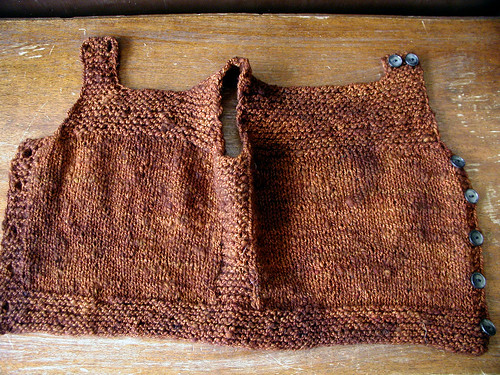

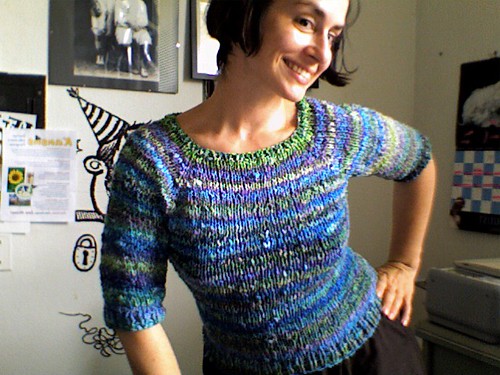
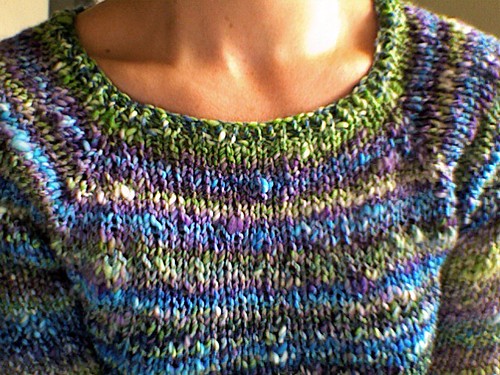


 INSTRUCTIONS
INSTRUCTIONS
